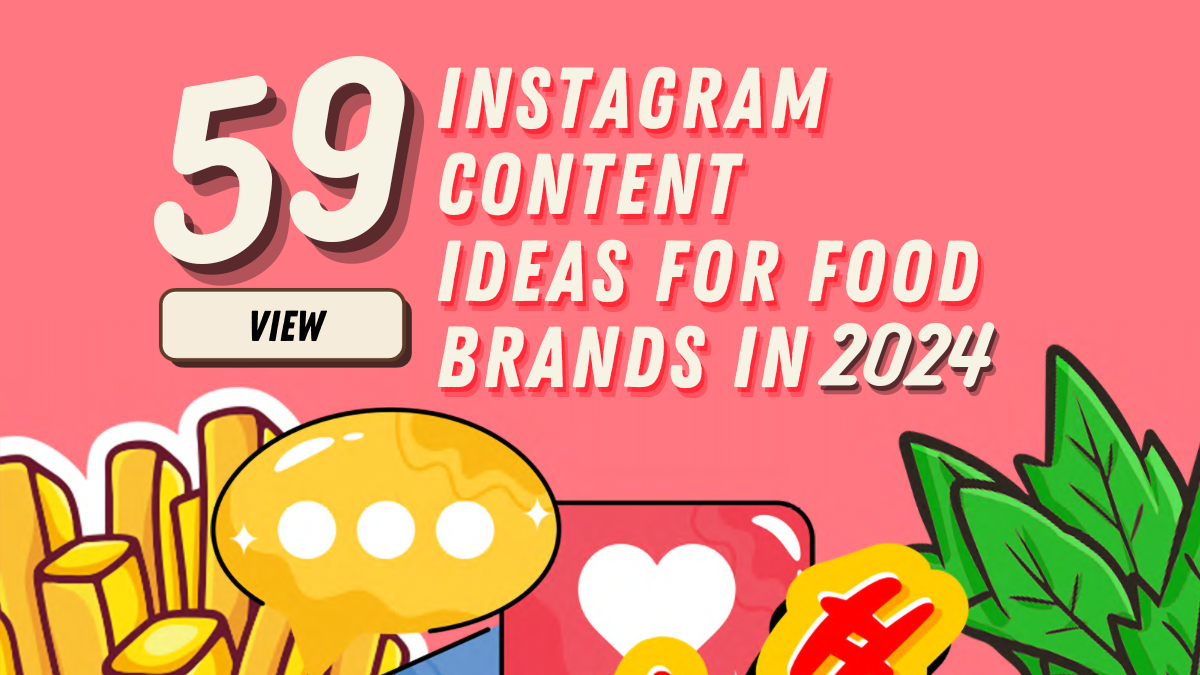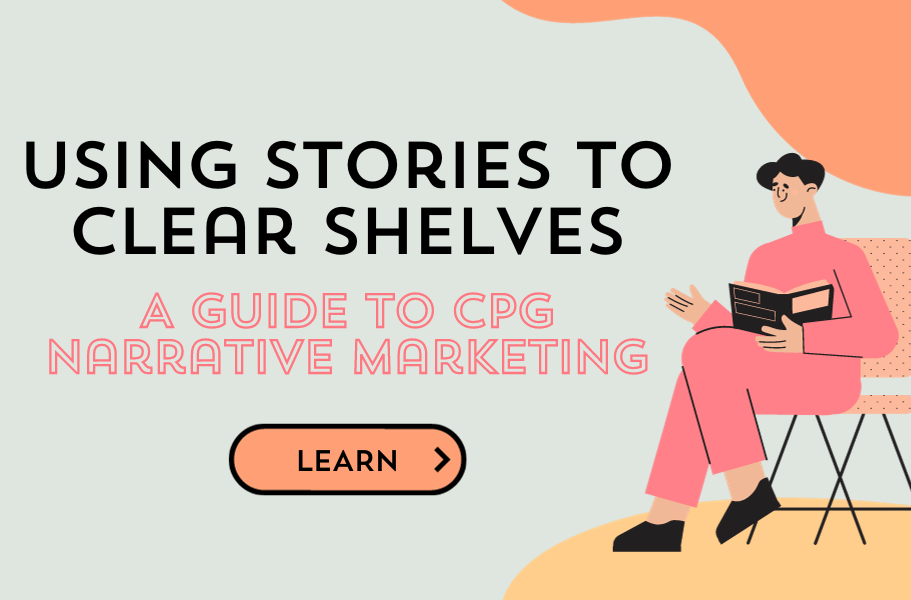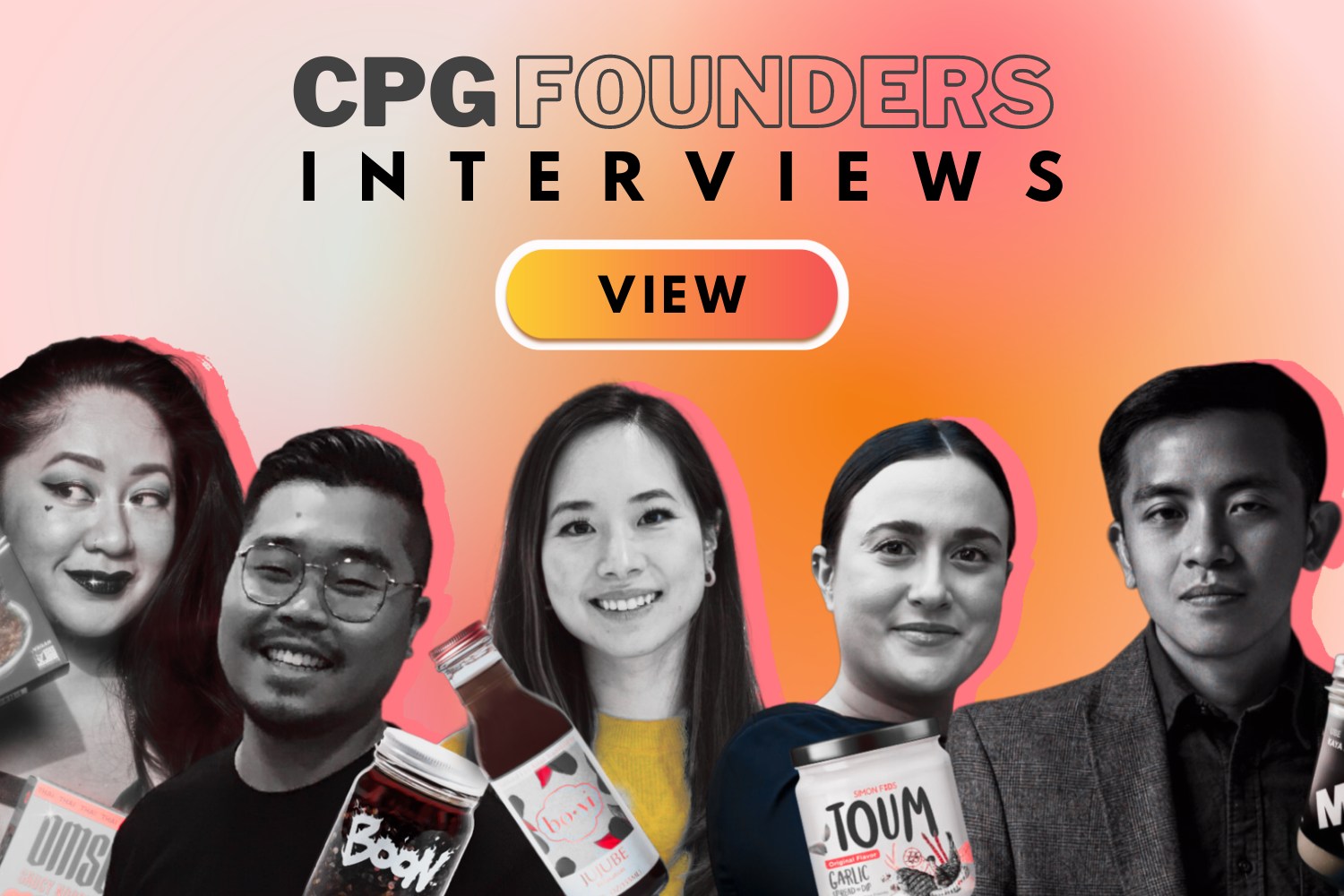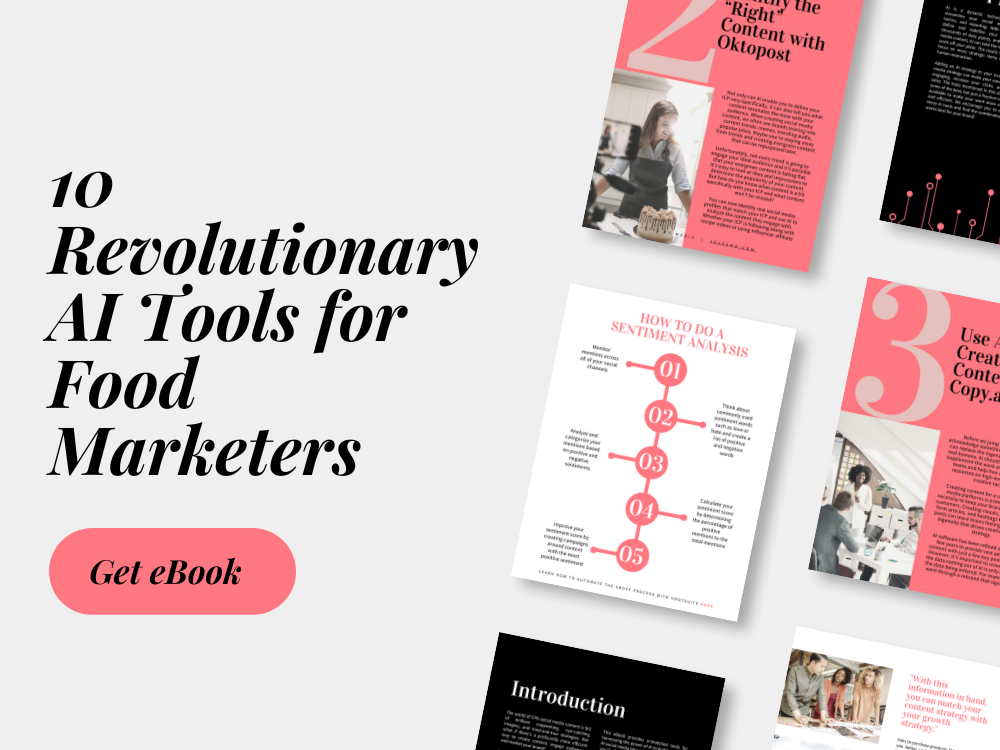Introduction
In the ever-evolving landscape of consumer-packaged goods (CPG) marketing, the strategic use of storytelling has become a pivotal tool for brands. A storytelling framework lets brands forge emotional connections and differentiate themselves in a crowded market. Harnessing the power of storytelling allows CPG brands to foster trust by sharing a genuine story that portrays vulnerability and empathy.
In this article, we break down Julee Ho Media’s Storytelling Framework, give you examples of CPG brands that have successfully used the framework to achieve real business results, and give you clear steps on crafting your own powerful brand story.
Storytelling Framework
Our storytelling framework provides a roadmap to craft a compelling story. Of course, we say “our” not because we invented this framework (since storytelling is as old as time). However, everyone uses their own framework and, in many cases, tends to miss the mark on the most powerful part of storytelling. We will detail that key pillar in this article.
Whether producing a movie or creating a compelling marketing campaign, the basic framework can be applied to any asset that you are creating. Especially helpful in marketing campaigns, storytelling framework lets audiences become invested in your story through the elements of desire, struggle, overcoming, and triumph.
Desire
The Desire phase lays the foundation by presenting a compelling need or want, igniting the audience's yearning for something more, or by sharing your own desires as a founder or company.
If you’re focusing on customer desires, CPG brands can tap into this aspect by understanding consumer aspirations, whether it's the quest for a healthier lifestyle, a desire for convenience, or a need for self-expression through the products they use.
If it is your personal story or company story that you’re sharing, provide context to your why. Why did you have a desire to start this company? Why does your company care so much about its mission?
Struggle
Following Desire, the Struggle element introduces conflict or obstacles, painting a relatable picture that consumers can empathize with. This step enables brands to humanize their narratives, portraying the challenges faced by their target audience and creating a deeper emotional bond.
This is the component that is often missed by many brands. We can all recall endless ads and promotional content telling us how great a company’s culture, products, and customer service is. They bombard us with positivity to an extent that it feels unbelievable. And the reason for our disbelief is because it’s inhuman to not have flaws. We don’t trust perfect because none of us are perfect. In other words, a lack of struggle in our stories creates a lack of trust with our audience.
Overcome
As the narrative progresses, the Overcome stage showcases perseverance, resilience, and the brand's role in aiding consumers to overcome their challenges. Brands can employ this phase to highlight how their products or services provide solutions, support, or a path toward resolution, aligning with the audience's needs. Contrary to popular belief, it is not your brand’s job to be the hero. It is your job to aid the hero (the customer) in solving their own problems.
You can also do this when telling your own brand story or founder story. How did you overcome the most prominent obstacles in your life? How did your company persevere during troubling times? The more authentically personal and detailed you can get, the more the audience will connect with you.
Triumph
Finally, the Triumph segment embodies the resolution, where brands depict the positive outcomes and transformations achieved. Through this phase, CPG marketing campaigns culminate in showcasing success stories (whether personal or those of their customers), affirming the brand's value and leaving a lasting impact on the audience.
Let’s look at how different CPG brands have harnessed the power of storytelling framework to create impactful campaigns that help consumers see their brand as the answer to their struggles.
Examples of Storytelling in CPG Brands
Chipotle: Back to the Start Campaign
Chipotle's "Back to the Start" campaign stands as a compelling example of leveraging a storytelling framework to convey a powerful and impactful message.
The campaign effectively follows the storytelling framework by first establishing a Desire – a desire for a more sustainable and ethical approach to farming and food production. The narrative begins with an animated short film that takes viewers on a journey, introducing a farmer who transitions from industrial farming to a more sustainable and humane model. This Desire phase taps into the growing consumer interest in understanding the origins of their food and the desire for a more ethical and transparent food system.
Moving into the Struggle phase, the campaign highlights the farmer watching the farm he loves turn into a mass production operation with cramped animal spaces and unknown chemicals being fed to the livestock.
The Overcome phase showcases the farmer's determination to move back to basics with free-range animals and no mass production of food, aligning with Chipotle's commitment to responsibly sourced ingredients.
Finally, the Triumph phase reveals the farmer's journey ending with a happy family and a sustainable partnership with Chipotle, emphasizing the brand's dedication to supporting sustainable agriculture.
By structuring the narrative in this way, Chipotle not only engages the audience emotionally but also effectively communicates its values and commitment to ethical sourcing, creating a memorable and authentic brand story.
This campaign was created by CAA Marketing.
Red Bull: Red Bull Gives You Wiiings
Red Bull takes a more humorous approach to their Red Bull Gives You Wiiings campaign. Through the use of animations and fanciful situations, like talking sea animals or mythical creatures, we see the same emotional draw from the storytelling framework used in a different and innovative way.
The Desire phase is established by tapping into the universal human desire for success. In one short video, a pirate captain and his crewmember are searching for buried treasure. The captain demands his partner dig up the treasure for him, his greed demanding a back-breaking pace from the digger.
The Struggle phase is incorporated by featuring these animations being unable to complete their goals or missing out on having fun. In our pirate example, the crewmember is making slow progress, digging out the sand at a much slower pace than the captain demands. This struggle resonates with the audience at a metaphorical level, portraying the challenges of trying to make progress on a task to little avail.
The Overcome phase showcases how, with the help of Red Bull, these individuals prevail over the roadblocks and inconveniences of life. The captain gives the crewmember a Red Bull to quicken his pace. Sand begins to fly as the crewmember digs his way well under the sand.
The Triumphant narrative shows the heroes of the campaign coming out on top of their situation due to newly-developed wings or heightened mind and body vitality. Our crewmember becomes so efficient after drinking Red Bull that he digs the treasure out from under the captain and escapes the island in a rowboat as a richer man.
Coke: Share a Coke
Coca-Cola's "Share a Coke" campaign is a brilliant example of employing a storytelling framework to create a powerful and relatable narrative.
The Desire phase is expertly established by recognizing a universal human desire for personalization and connection. By replacing the Coca-Cola logo with common names, the campaign taps into the intrinsic human need for recognition and individuality. This clever approach turns a simple beverage into a personal experience, as consumers are now motivated to find and share a Coke with friends, family, and even themselves, enhancing the emotional tie with the brand.
The Struggle phase is demonstrated through the heroes of their campaigns experiencing loneliness or separation from friends and family. We see one hero separated from his family during Diwali, sharing a brief phone call with his mom on the holiday.
The Overcome phase is achieved when these people find a friend's name on a bottle and use it as an opportunity to reconnect. Our hero celebrating Diwali has a neighbor that overhears his conversation and puts on a Diwali celebration for him. Her only ask? That they share a Coke.
The Triumph gives viewers the heartwarming feeling of togetherness, this time shown as sharing a meal and a cold beverage together.
Ogilvy Marketing Agency is the creative genius behind his iconic campaign.
General Mills: The Cheerios Effect
This General Mills campaign was so impactful that there is a scientific effect named after it – the Cheerios Effect.
The Desire phase shows the universal human desire for bonding and togetherness, especially within families. The campaign highlights the simple and touching act of sharing Cheerios, portraying the desire for bonding and unity during shared moments. This desire is relatable and taps into the emotional core of family relationships, making the campaign universally appealing.
The Struggle phase is woven into the narrative as families face the challenge of staying connected in the midst of busy, modern lifestyles. The campaign depicts the struggle families encounter in maintaining strong connections and the importance of small, meaningful gestures like sharing a bowl of Cheerios.
The Overcome phase showcases how, with the help of Cheerios, families can triumph over the challenges of time constraints and busy schedules, fostering moments of fellowship. The heartwarming visuals and narratives present the cereal as more than just a product but as a facilitator of family togetherness, crafting the perfect visuals of Triumph.
The campaign that inspired a scientific revelation was created by Cossette.
Barilla: The Rooftop Match
Barilla capitalized on a universal experience that was something we all experienced simultaneously: COVID-19.
The Desire phase is established by tapping into the universal desire for friendship that was unavailable during a time of quarantining and isolation. The campaign showcases the desire for togetherness and the pleasure of spending time with loved ones during an uncertain time. By setting the stage with a rooftop tennis match, Barilla aligns its narrative with the idea that creativity and ingenuity bring people together in both shared interests and, as we’ll later find, delicious food.
The Struggle phase is a unique approach that uses a worldwide event to trigger the emotion, letting viewers tap into their own reactions to the COVID-19 pandemic.
The Overcome phase unfolds as the heroes successfully navigate isolation, bringing the rooftop tennis match to the rest of the world through a viral video.
The Triumphant moment of enjoying a meal with their tennis hero after the match highlights the power of good food to overcome obstacles and strengthen bonds. Through this narrative structure, Barilla effectively communicates the brand's commitment to fostering relationships through the shared enjoyment of its pasta products, turning a simple meal into a meaningful and joyous experience.
This heartwarming campaign was created by We Are Social.
WhatIF Foods: A Better Better
WhatIF Foods knows the importance of food that is good for their planet. Their website was built with a storytelling framework that sets up the visitor to be the hero in the regenerative food movement. The Desire is outlined as the consumer's desire to want delicious food that is good for the planet. With a more sustainable approach to food, the audience can feel better about their choices.
WhatIF displays the Struggle to find the best sustainable food options that are good for consumers, producers, animals, and the planet as a whole. There are so many options that are marketed as healthy and sustainable, but how can anyone be sure? Viewers can relate to the guilt that is felt by the hero when faced with making decisions that don’t align with personal values.
We then see the hero Overcome as they find a food and beverage option in WhatIF Foods that they can be proud of using. The Triumph phase here is the most exciting as we get to celebrate not only the hero, but the farmers, animals, and ecosystems that also get to succeed with this choice.
Steps for Your Own Story
Now that you’ve seen storytelling in action, it’s time to take the next steps in creating your own storytelling campaign. Rather than start from the beginning of the storytelling framework, it may be easier for your brand to work from the middle outwards.
Step 1: Define your value proposition
Your unique value proposition sets you apart from the competition. Take some time to identify where your differentiator aligns with what consumers, or your heroes, are looking for. As mentioned in the Overcome paragraph above, it’s important that you make your customer the hero in your story. You want to position your brand as the guide that helps the hero, your customer, be successful. This intersection is often a great place to start crafting the perfect topic for your story. You know that this topic is not only representative of your brand but also will resonate with your audience, giving them something that is relatable and allowing them to see themselves as the hero in your story.
Let’s walk through these steps as if we are a fictitious organic chocolate company. Our value proposition is that we donate a portion of our sales to regenerative farming efforts in the countries that produce our cacao beans. We make delicious chocolate that gives back to the communities and cultures that make it possible. We also know that there is a large segment of consumers who make purchases with a sustainability lens, supporting brands that are working to preserve our planet. This is a good topic to begin building our storytelling framework pillars around.
Step 2: Map out your story
Now that you have a strong topic, it’s time to map out your story. Determine if you want to focus on a brand story or the story of the founder. Think about the hero of your story and identify their desire and struggle. Clearly demonstrate how your brand or product helps the hero overcome. Getting the critical pieces (desire, struggle, overcome, triumph) together give you the framework necessary to dive into the creative aspects of your campaign.
For our organic chocolate company, let’s map out the story in its entirety. We start with the hero, our company’s ideal client profile (ICP). Our brand is popular among workforce Millennials, so we want our hero to reflect that. Our hero desires a delicious treat that brings people together but still aligns with their personal values of sustainability and protecting our planet. Struggling to find a brand that checks all the boxes and leaves our hero feeling unfulfilled or guilty about trying to enjoy themselves. After searching, our hero finds our brand that allows them to indulge in a way that makes them feel good about themselves and their choices (Overcome and Triumph).
Once we have the pillars mapped out, we can begin adding color to the story to make it a memorable piece that sticks with audiences.
Step 3: Fill in the details
This is the place to flex your creativity. With the pillars of the story in place, you can begin including unique settings, footage of a farm you use, or fun visual effects. These details not only help create a robust story but are also the opportunity for your team to start sharing your brand voice. This is also an opportunity to inject humor into the storytelling framework, using elements like an at-odds conscience or funny interpersonal relationships.
The final step for our fictitious organic chocolate company is to include relatable details or context. Maybe we want to include a depiction of a conscience that our hero is listening to when making a decision. We can include photos or videos taken at our sustainable farms across the world that showcase the hard-working farmers that make our mission possible.
After putting together our storytelling framework pillars and details unique to our brand, we’re left with a genuine story that speaks to our brand values and how we make consumers’ lives better.
Conclusion
If you think back to the most memorable moments of your life, the biggest decisions, or your favorite movies - there’s likely a story attached to it. Whether it was your big move across the country or your favorite Game of Thrones battle scene, there was a narrative playing (whether in your mind or on a screen) that emotionally compelled you. That emotional tie-in that truly resonates with the audience is what strong storytelling can accomplish and is the reason that brands should be incorporating storytelling into their brand.
Whether you’re an emerging brand working with a limited budget or a large brand looking to invest more in your marketing, the storytelling framework can be incredibly successful. Follow our guide, get creative, and trust the process - you’re sure to craft a compelling story that will drive your brand recognition and, in turn, your sales and the growth of your company.
Julee Ho Media is a boutique photography company specializing in CPG, food and beverage brands. Click here to get a quote and discover how we can help elevate your brand.
Continue learning:
Want more content like this? Subscribe to our monthly Food Marketing Newsletter!














